PRE-IMPLANTORY SURGERY BORDEAUX
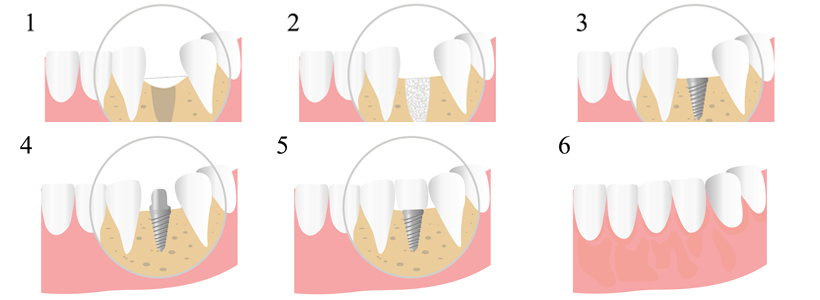
Pre-implant analysis
The placement of dental implants requires a thorough preparation, carried out before the intervention using exams such as radio, dental scanner cone beam etc. Dental implant placement may be exposed to the problem of bone insufficiency in some patients.To ensure effective anchoring and durability for the future prosthesis, the implants must be placed in sufficient bone volume. When the bone volume is too small, it can be surgically increased by bone grafting or bone filling.
The grafted bone can be either from the patient: it is the autograft, usually taken from the level of the lower jaw; from a biomaterial: it is a graft without sampling. A preliminary bone assessment is imperative to define the technique, the volume of bone to be reconstructed and the simultaneous insertion or not of the implants.
Bone grafting will only be performed as a last resort, if the shorter implants can not be used. Indeed, the latest scientific and technological advances make it possible to avoid or reduce the use of bone grafting in the majority of cases.
Pre-implantory surgery
There are generally two types of bone grafts :
Autografts : the bone is taken from the person receiving the graft, usually in the lower jaw, either at the chin or on the lateral parts. We will be able to recover a small bone block that will be stabilized with a micro-screw. This type of transplant is called an onlay graft or graft. For the graft to integrate, a period of 6 to 8 months of healing is usually required. Then the implants can be put in place and the fixation screws usually removed at the same time. This type of bone graft can treat bone deficiencies extended in height and thickness under a simple local anesthesia. For patients with very large bone loss and therefore requiring larger grafts, bone can be removed from the skull or hip. These transplants come under maxillofacial surgery. They are practiced under general anesthesia in hospital.
Transplants " without sampling ": : in this situation, the bone defect is filled by different biomaterials of synthetic origin, human or animal. In all cases, these materials undergo a series of sanitary treatments guaranteeing them a very high security of use. The graft is placed in the area where lack of bone is a problem. Immobilized, it will gradually guide a new bone formation. This type of bone filling may be associated with the simultaneous or delayed placement of implants. A healing time of 4 to 9 months is necessary for optimal graft consolidation. This bone supply makes it possible to compensate for short-term defects and the lack of bone volume in the sinuses: it is a sinus graft or sinus lift.
Sinus Lift – Bone filling
We often encounter an augmentation of the sinus’ volume (posterior cavity) in the posterior sector, on the upper maxillary, and in toothless areas to the detriment of the bone’s crest.
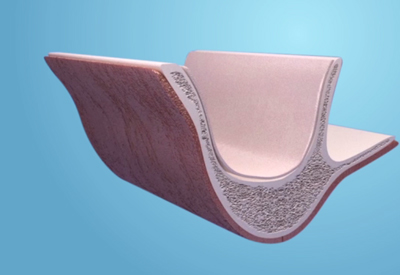
The volume occupied by the bone, diminishes over time. The sinuses then take up the space left empty by the bone’s disappearance.
There are then two types of cases :
The height of the crest is at least 6mm and we can position short implants (inferior to 10mm) with a real success rate.
Or the height of the crest is inferior to 6mm: it is then necessary to increase the bone crest’s volume in place of the sinus to position the implants.
Surgery, in the sinuses for dental implants, can sometimes happen in the same appointment, so as to let the patient avoid having to go through pre-medication twice, or through surgery twice.
The height of the crest is at least 6mm and we can position short implants (inferior to 10mm) with a real success rate.
Or the height of the crest is inferior to 6mm: it is then necessary to increase the bone crest’s volume in place of the sinus to position the implants.
Surgery, in the sinuses for dental implants, can sometimes happen in the same appointment, so as to let the patient avoid having to go through pre-medication twice, or through surgery twice.
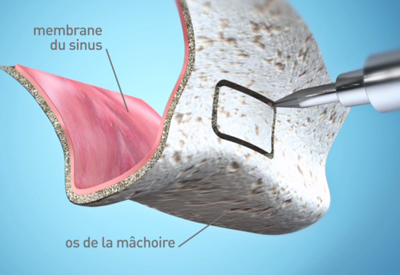
Creation of a flap on the sinus’ anterior face.
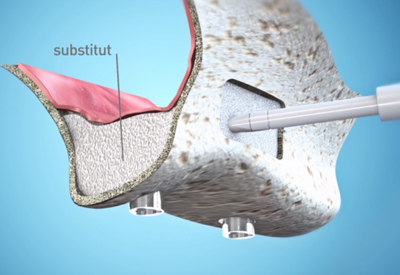
In the majority of cases it is necessary to fill and augment bone volume in this space with a bone substitute, in order to allow a solid and stable anchoring of the dental implants.
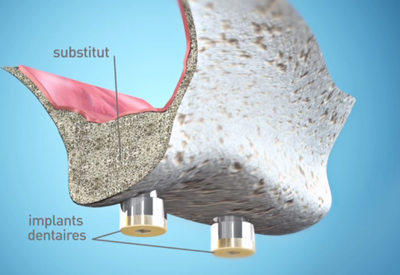
When possible, this pre-implantory surgery can be performed at the same time as the placement of the implants. This allows to considerably reduce the operating time and the treatment’s duration.



